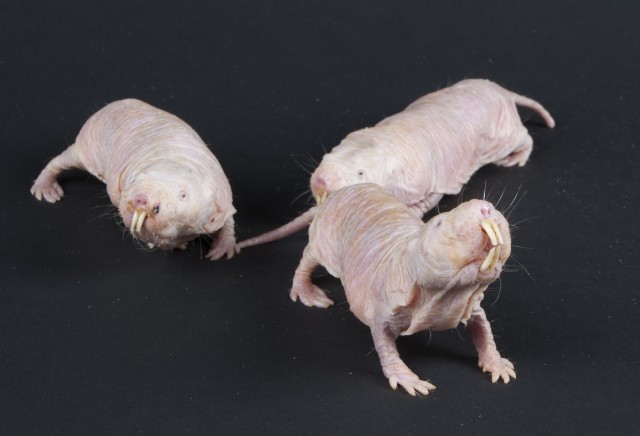Researchers have discovered how one of the world’s oddest mammals developed resistance to cancer, and there is hope that their work could help fight the disease in humans.
Naked mole rats live underground, where environmental conditions are harsh but predators are few. They can live for more than 30 years, almost twenty-seven years longer than their close cousin the house mouse—which is particularly susceptible to cancer. They breathe slowly due to the limited supply of oxygen, survive on very little food, have poor sight, and are largely indifferent to pain.
Naked mole rats are also the only mammals that do not regulate their body temperature. Because they live in colonies where the queen rat does the job of producing progeny and only a few males father the litters, their sperms become lazy.
For cancer researchers, mice and naked mole rats fall on two extremes of the disease spectrum. Mice are used as animal models of disease because of their short lives and high incidence of cancer, which help researchers study the mechanism of cancer occurrence and test drugs that fight the disease.
Naked mole rats, on the other hand, have never developed cancer in the years that they have been studied. In labs, researchers often don’t wait for their animal models to develop cancer. Instead they induce cancer by blasting the animals with gamma radiation, transplanting tumors, or injecting cancer-causing agents. Do that to a naked mole rat, though, and nothing happens.
Now, Vera Gorbunova and Andrei Seluanov at the University of Rochester think they may have found one mechanism by which naked mole rats defend themselves against cancer. Their results, reported today in the journal Nature, make for a strange tale.
While studying cells taken from the armpits and lungs of naked mole rats, they found an unusually thick chemical surrounding the cells. This turned out to be hyaluronan, a substance that is present in all animals, where its main job is to hold cells together. Beyond providing mechanical strength, it is also involved in controlling when cells grow in number.
Cancer relies on the unregulated growth of cells, so hyaluronan was thought to be involved in the progression of malignant tumors. According to Gorbunova, aspects of hyaluronan may regulate cell growth as well as hyaluronan’s amount and thickness.
Keep reading at Cancer immunity of strange underground rat revealed | Ars Technica.














